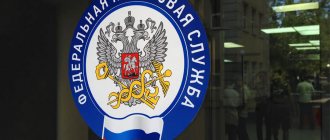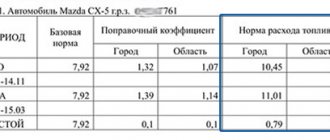Ways to indicate the maturity of a bill
The bill obliges the repayment of the debt to the one who presents it (the holder).
There are two types of DCB:
- A simple bill (solo bill) is paid by the person who issued it (the drawer).
- The transferable draft (draft) is repaid by a third party at the request of the debtor.
The form must include the “Payment Date” information, without which the promissory note loses its legal force. Debt repayment occurs:
- upon presentation;
- within a specified time after presentation;
- after a set time from compilation;
- on a specific day.
Specifying other periods or more than one is not permitted.
Upon presentation
In this way, the debt is repaid, even if the “Payment due date” column is not filled in. The DSB is presented by the holder within a year from the date of preparation. The debtor has the right to reduce or increase this period.
The option is inconvenient for the payer, since he must be ready to transfer the required amount at any time.
Within a specified time after presentation
Such a security must be presented for acceptance or protest within a year after issue. The fact of presentation is confirmed by the payer’s signature in the acceptance section.
If the payer signed but did not mark the date, then it is considered that consent to payment was given on the last day of the period agreed upon for the provision of the DSB for acceptance. Or the moment of protest is determined - an appeal to a notary to record the fact of signing by the payer.
The time for payment after presentation of the bill of exchange is calculated similarly to the time provided for payment from the moment of drawing up.
After a set time from compilation
Unlike the previous version of indicating the deadline, the moment of preparation is recorded on the form.
Debt repayment can be negotiated in different ways:
- After a few months. The period begins on the day following the date of preparation (or presentation) and ends with the day of the month coinciding with the date of the beginning of the period. For example, if the CDB includes the condition “within 3 months”, it was presented (or compiled) by:
- April 23, 2022, then it must be paid on July 24, 2022, but not earlier;
- November 29, 2022, then the debt will be repaid on February 28, 2022, since February 30 does not exist;
- January 31, 2022, then payment will follow on May 6, 2022 (the nearest working date, since May 1-5 is a weekend).
- In half a month. In this case, 15 days are considered.
- In a few days. The debt is paid at the last of them.
- Setting payment at the beginning, middle or end of a specific month means the first, fifteenth or last day, respectively.
On a specific day
Debt repayment can be scheduled for a selected date. If the calendars of the place of issue of securities and the place of payment are different, then the date of repayment of the debt is determined based on the calendar adopted at the place of transfer of the debt.
domicile
Lawyers accustomed to ordinary business transactions and contractual relations may think that the place of presentation of the bill of exchange may be the designation of the city, as indicated on the contract. However, this is not entirely true, or even true at all. The place of payment refers to a specific premises or space. The law does not describe which space should be designated as the place of payment. Thus, the place of payment can even be a garage. If the place of payment is not determined, then in accordance with Art. 2 of the Regulations, the place indicated next to the name of the payer is considered the place of payment, and, at the same time, the place of residence of the payer.
Maximum validity period of a promissory note
The bill of exchange legislation does not provide for a period limitation.
For a simple bill of exchange, as well as a bill of exchange, there are only the following exceptions:
- Paper upon presentation is provided within a year from the date of issue.
- The form for acceptance or protest can be presented within a year after issue if the debt must be paid within a certain period after issue.
- The holder of the securities must present the document on the day of repayment of the debt or within the next 2 business days, if it indicates the period from the date of provision (drawing up) or a specific date.
notarized presentation of a bill of exchange for payment
The law does not provide for a mandatory notarial form of presenting a bill of exchange for payment. But its use makes it possible to provide additional guarantees of proof of presentation of the bill. The notary can attest to the fact of non-payment of the bill of exchange (protest of payment of the bill of exchange). This procedure for public certification of non-payment of a bill of exchange is established by clause 44 of the Regulations and therefore must be mandatory. However, judicial practice for some reason ignores this rule. Thus, it is possible to present a bill of exchange for payment without a notary, which will save money, but it is necessary to protest the bill for non-payment with a notary. As is already clear, presenting a bill of exchange is not an easy procedure and it will be difficult to do without the help of a specialist.
What happens if you miss a payment deadline?
After the expiration of the time associated with the fact of presentation, the holder loses his rights against the debtor, but retains them against the payer who signed the acceptance. This means that the promissory note is not payable, since the acceptor is concerned only with the draft.
But paragraph 78 of the Resolution of the Central Executive Committee of the USSR and the Council of People's Commissars of the USSR dated 08/07/1937 No. 104/1341 equates the payer to the debtor on a solo bill. It turns out that the holder of the rights can defend in court during the bill of exchange limitation period:
- 3 years from the date when the payment should have been made are allotted for a claim against the payer.
- 1 year from the date of protest – to file a claim against the debtor.
claim on a bill of exchange
Established practice in court suggests the possibility of presenting a bill of exchange immediately by filing a claim. This, of course, contradicts logic, but it does not contradict the law. However, what about legal costs, penalties, fines and other consequences arising from the claim proceedings, because if you present a bill of exchange without a trial, you can do without additional expenses that the drawer must cover.
The state duty is paid based on the price of the claim, equal to the amount of claims on the bill plus interest (if provided). The place of filing the claim is the place of residence (location) of the drawer.
To summarize, we can summarize that if the payment deadline for a bill has come, you can present it yourself without a notary; it is possible to send it by registered letter (a copy of the bill, not the original). The original bill of exchange can be given to the drawer only after payment has been made. If payment is not made within a reasonable time (usually within 1 month), you can safely file a claim in court at the place of residence (location) of the debtor. Then you receive a decision, and later a writ of execution.
Our company has been involved in bill law for many years and is ready to help if any difficulties arise with presenting a bill for payment. Contact us and we will be happy to help you!
The Supreme Court clarified the legal status of the bill for tax purposes
On September 30, the Supreme Court of the Russian Federation issued Ruling No. 305-ES19-996 in the case of a Russian brewery challenging the results of an on-site tax audit, during which it was fined for failure to pay income tax in connection with settlements for the acquisition of trademarks using promissory notes of foreign companies.
A Russian company paid for trademarks with promissory notes from foreign companies
In 2003–2006 a foreign company, being the owner of a share of over 50% of the capital of Ivan Taranov Brewery LLC, issued its bill of exchange to the latter free of charge, and also transferred the bill of exchange to another foreign company.
Further, the above-mentioned Russian company, being the only participant in PIT Investments LLC, transferred one of these bills to the latter free of charge. As a result of the reorganizations of foreign companies, the obligations of the drawer for the above securities transferred to (Republic of Cyprus). Subsequently, the bills went to United Heineken Breweries LLC by way of succession from the Russian companies Ivan Taranov Breweries and PIT Investments, which were annexed to it.
In August 2012, a Russian brewery bought the rights to trademarks from a foreign brewery on the basis of an agreement on the alienation of exclusive rights. The company paid with the above bills and the parties entered into an agreement on the offset of claims.
The tax inspectorate assessed additional income tax, penalties and a fine to the company
In 2016, the interregional inspectorate of the Federal Tax Service of Russia No. 3 for the largest taxpayers conducted an on-site tax audit of Heineken for the period from January 1, 2012 to December 31, 2013. Based on its results, the inspection concluded that when offsetting counterclaims in 2012, the company did not record income from the sale of promissory notes received free of charge. As a result, the tax base for corporate income tax for the above year was underestimated by 729 million rubles, and the Russian budget did not receive additional tax in the amount of 145 million rubles. Thus, the tax authorities decided to hold the organization accountable, assessing additional income tax, penalties and a fine for a total amount of over 237 million rubles.
Subsequently, the Federal Tax Service of Russia only slightly reduced the accrued tax and penalties, leaving the decision of the lower body in force. In this regard, United Heineken Breweries LLC challenged the results of the on-site inspection in court.
Two instances decided that the controversial transaction was equivalent to the repayment of a loan, but the cassation did not agree
The courts of the first and second instances satisfied the applicant's demands and invalidated the tax inspectorate's decision. They proceeded from the fact that the disputed bills of exchange were used by the company as a means of payment when acquiring trademarks and the company did not receive any economic benefit subject to taxation. According to the courts, repayment of disputed bills in the current situation should be considered as repayment of the loan, which, according to sub. 10 p. 1 art. 251 of the Tax Code of the Russian Federation is not income for tax purposes.
In addition, both courts considered that the inspectorate, when accruing arrears, unlawfully ignored the taxpayer’s accumulated losses from previous tax periods. As the courts indicated, during the on-site audit, the tax authority requested, and the company presented, documents confirming the period of formation and the legality of the formation of the corresponding loss, starting from 2008. In this regard, the courts came to the conclusion that, within the framework of the application of Art. 283 of the Tax Code of the Russian Federation, when assessing additional taxes, the inspection was obliged to adjust additional assessments to the amount of the generated loss.
Subsequently, the district court did not agree with the conclusions of the lower authorities and partially overturned their judicial decisions. The cassation noted that in 2012 the company disposed of bills of exchange as securities as a result of their presentation for payment and repayment of the nominal value of bills. This operation, in accordance with paragraph 2 of Art. 280 of the Tax Code of the Russian Federation is subject to income tax taxation. The district court also pointed out that the case materials do not confirm the existence of borrowed relations with the participation of the company; on the contrary, the bills were received by it free of charge as securities.
The cassation instance added that the inspectorate did not have the obligation to take into account the losses of previous tax periods accumulated by the company when determining the amount of tax arrears for the periods covered by the inspection, since in response to the requirement to submit primary documents confirming the amount of the generated loss, the taxpayer provided only tax accounting registers and balance sheets without submitting primary documents. Thus, the company did not confirm its right to account for losses.
The Supreme Court of the Russian Federation only partially agreed with the conclusions of the district court
With reference to significant violations of substantive and procedural law, United Heineken Breweries LLC filed a cassation appeal to the Supreme Court of the Russian Federation.
Having studied the circumstances of case No. A40-24375/2017, the highest court supported the conclusion of the district court that the inspectorate had legal grounds for including the value of redeemed bills of exchange in the taxable income of the company. “When considering the case, the company did not provide evidence confirming the entry of its legal predecessors - Ivan Taranov Breweries LLC and PIT Investments - into borrowing relations with the foreign companies Ivan Taranov Breweries (Cyprus) Limited and D&D Brewing Ltd, which issued the disputed bills. On the contrary, as the courts have established, these bills of exchange were transferred to the company free of charge on the basis of separate agreements. Consequently, as the district court correctly pointed out, the courts of the first and appellate instances had no basis for concluding that sub-clause. 10 p. 1 art. 251 of the Tax Code of the Russian Federation and on the exemption from taxation of income received by the company when presenting bills of exchange for redemption,” noted in the ruling of the Court, which indicated that in this part the cassation appeal is not subject to satisfaction.
At the same time, the Supreme Court did not agree with the conclusion of the district court that when determining the final amount of the arrears, the inspectorate did not have the obligation to adjust this income by the amount of losses accumulated by the company in previous years. Thus, the Court explained that when calculating income tax, taxpayers are given the right to take into account the loss when calculating the specified tax, but subject to compliance with the requirements established by law, including when fulfilling the obligation provided for in paragraph 4 of Art. 283 Tax Code of the Russian Federation. Consequently, in order to refuse to apply the provisions of the above article, it must be established that the corresponding expenses of the taxpayer, included in the amount of the transferred loss, are not documented (Resolution of the Presidium of the Supreme Arbitration Court of the Russian Federation dated July 24, 2012 No. 3546/12). This circumstance is established during a tax audit, i.e. based on the results of interaction between the tax authority and the taxpayer, taking into account the behavior of the parties within the framework of such interaction.
“This means that if a question arises about the transfer of accumulated losses from previous years, the tax authority, during a tax audit and consideration of its results, is obliged to provide the taxpayer with a real opportunity to confirm compliance with the requirements of clause 4 of Art. 283 Tax Code of the Russian Federation. In this case, as established by the courts, during the tax audit the inspectorate sent the company a request to provide primary documents confirming the amount of the loss generated, in response to which the taxpayer submitted tax registers and balance sheets. Thus, the taxpayer did not ignore the request received from the inspectorate. Tax accounting registers in accordance with the provisions of Art. 313–314 of the Tax Code of the Russian Federation are intended for systematization and accumulation of information contained in primary documents accepted for accounting, analytical data of tax accounting for reflection in the calculation of the tax base, and, therefore, are evidence allowing to determine the amount of transferred losses,” the Court’s ruling noted. .
The case was sent for a new trial to the court of first instance
The Supreme Court noted that in the current situation, taking into account the volume of documents confirming the taxpayer’s expenses, the objective complexity of their one-time submission in a short time, in order to ensure his right to transfer losses, the inspectorate had the right to use the powers provided for in paragraph 1 of Art. 93 Tax Code of the Russian Federation. Namely, to request from the taxpayer documents that the inspectorate does not have (not presented during previous inspections) and that are necessary to verify the validity of specific expenses indicated in the tax and accounting registers. However, the tax authority did not take advantage of this right.
Under such circumstances, the conclusion of the district court that the tax authorities do not have an obligation to take into account the amount of losses accumulated by the company when determining the amount of arrears for income tax for 2012 cannot be considered legal. At the same time, the courts of the first and appellate instances did not establish in which specific cost items the company announced the transfer of losses and to what extent the loss declared for transfer was actually confirmed by primary accounting documents. Thus, the Supreme Court of the Russian Federation found that the courts of three instances did not properly assess the behavior of the inspectorate and the company at the stage of the tax audit when confirming the amount of the transferred loss and did not establish the amount of the transferred loss that meets the requirements of paragraph 4 of Art. 283 Tax Code of the Russian Federation.
In this regard, the Supreme Court overturned the judicial acts of the lower courts regarding the conclusion regarding the episode related to income tax, and sent the case for a new trial to the court of first instance. When considering the case again, the court should check the arguments of the company and the objections of the tax authority regarding the admissibility of transferring losses, taking into account the behavior of the company and the inspectorate at the stage of conducting a tax audit and considering its results, and, if necessary, invite the parties to provide evidence confirming the amount of losses from previous tax periods, which may be postponed to 2012 due to a decrease in income from repayment of bills.
AG experts had mixed assessments of the Supreme Court’s findings
Lawyer, partner and head of the “Arbitration, Tax and Bankruptcy Law” practice of the Moscow Bar Association No. 5 Vyacheslav Golenev noted that the commented definition of the RF Armed Forces concerns two issues: the ratio of a bill and a loan for tax purposes, as well as the transfer of losses.
“With regard to the legal status of a promissory note for tax purposes, the Court's main point is that a promissory note can be considered a loan only to the first holder of the promissory note who paid the promissory note (i.e., in fact, issued the loan financing). However, in the above case, the bills were received free of charge precisely as securities, and not as debt financing on the conditions usually existing in practice. Bills of exchange began to be transferred from company to company as an object of property, and their nature for tax purposes is the transfer of securities, which means that the form of the transaction was initially different (not a loan, but an assignment of claims on a security). The taxpayer was not a participant in the original debt financing. For any subsequent holder of the bill, the transfer of the bill will be considered as a transaction for the purchase and sale of the bill, and the repayment of debt on it will be considered as a profitable transaction with the taxation of such income with income tax,” the expert explained.
According to the lawyer, the Supreme Court correctly noted that the tax base in this case is determined taking into account the features established by Art. 280 Tax Code of the Russian Federation. Thus, the taxpayer’s income is taken into account, including from the redemption or partial redemption of their nominal value and expenses incurred, determined based on the purchase price of the securities. Since the reorganization does not change the taxation procedure, to determine the tax base, the taxpayer can also use the price of acquisition of securities by his legal predecessor (clause 1 of Article 277 of the Tax Code of the Russian Federation). “In the case under consideration, it was established that the bills of exchange were received by the legal predecessors free of charge, which means that there were no expenses that could be used to reduce the income from the controversial operation to repay the bill of exchange within the framework of Art. 280 Tax Code of the Russian Federation. The taxpayer did not personally issue the loan (did not buy the bill), and therefore he could not be a participant in the original loan legal relationship for the purpose of tax exemption under subsection. 10 p. 1 art. 251 of the Tax Code of the Russian Federation,” explained Vyacheslav Golenev.
Regarding the issue of transferring losses, the expert noted that the Supreme Court supported the well-known approach of the need for documentary evidence of losses. “At the same time, the Supreme Court pointed to an additional procedural criterion necessary for correctly establishing the taxpayer’s actual tax liability in terms of losses - the request for documents from the taxpayer must be correlated with his real opportunity to confirm compliance with the requirements of paragraph 4 of Art. 283 Tax Code of the Russian Federation. In this case, the tax authority requested documents confirming the amount of the loss, but not its basis. The tax authority did not request any other documents, thereby refusing to exercise its rights to a more in-depth audit of the taxpayer’s behavior in terms of reflected losses. Therefore, the controversial legal issue of the case during a new consideration will be precisely the amount of the loss, and not the legality of its accounting,” the lawyer explained.
Lawyer, head of tax disputes practice at MEF Audit Dmitry Kirillov did not agree with the Supreme Court’s conclusion on the taxation of bills. “The Supreme Court concluded that the presentation of a bill of exchange for payment not by the original holder of the bill, but by the person who received it in the course of subsequent transactions, is a different disposal and sale for tax purposes. This position seems controversial; I am inclined to agree with the approach of the lower courts (alas, refuted in the definition), which considered in this case the legal nature of the bill of exchange and the loan agreement to be similar. In this situation, the drawer issued an obligation to pay money to the holder of the bill or another person, subsequent transactions for the transfer of this bill could be considered assignments, and the last holder of the bill, Heineken United Breweries LLC, presented the bill for payment, and the drawer fulfilled his obligation by offset,” noted He.
According to the expert, the Supreme Court indirectly confirmed this logic, pointing out that sub. 10 p. 1 art. 251 of the Tax Code of the Russian Federation is applicable to situations where the taxpayer (his legal predecessor) acted as a participant in a borrowing relationship formalized by issuing a bill of exchange. “From this we can conclude that the Court would be ready to recognize the borrowed nature of these bill of exchange legal relations if United Heineken Breweries LLC were their direct participant. Unfortunately, further the Supreme Court of the Russian Federation made a negative conclusion for the taxpayer regarding the taxation of the disposal of the bill of exchange with income tax in accordance with clause 2 of Art. 280 of the Tax Code of the Russian Federation,” the lawyer believes.
At the same time, Dmitry Kirillov positively assessed the Court’s conclusion that the tax authority’s inaction was inadmissible when the taxpayer submitted to it documents that the tax authority considered insufficient to confirm the loss carried forward to future periods. “The Supreme Court correctly indicated that the tax authority had the right to use its powers to demand documents and establish with their help the grounds for transferring losses, but did not do this, on this basis the case was sent for a new consideration,” the expert concluded.







